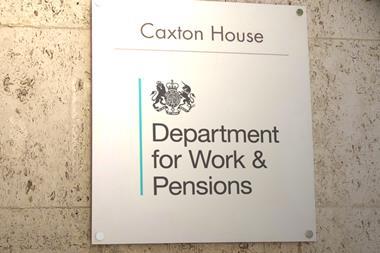Designing a robust retirement income solution is not easy – as with most complex issues, there are no silver bullets, only trade-offs. The challenge is to balance life-long retirement income stability with financial risk-taking, all within a framework that is understandable, transparent and fair and hence can be trusted by members.

As the UK debate on collective solutions progresses, there are many suggestions on both sides of the argument. Correctly implemented, it is possible that such models could help mitigate some of the current market imperfections in the financial services industry. However, new research demonstrates that one of the major supposed advantages of collective schemes – the superior financial outcomes achieved for members – is questionable. Acknowledging that additional drawbacks may also arise from collective schemes, it is clear that if collective defined contribution (CDC) is adopted in the UK much care will be required to ensure that the benefits are captured while the drawbacks are avoided.
In the consultation paper ‘Reshaping Workplace Pensions for Future Generations’ from the Department of Work and Pensions, the Collective DC and the Pension Income Builder models reflect elements of the Dutch and Danish approaches respectively. These contain both good and bad elements and it is vital that the UK learns the key lessons of these countries’ experiences to ensure the best solution is achieved.
What collective solutions cannot offer: the actual Dutch experience
The clear strengths of the Dutch system are the high contribution rates and the fact that most employees are covered by workplace pension solutions – these are necessary conditions for building a good retirement income. However, recent insights challenge the fundamentals on which the current Dutch collective solution rests: firstly, even in the Dutch mandatory scheme, the welfare gains due to intergenerational risk sharing amount to gains in retirement income of only a few per cent; and secondly, individual life cycle investment strategies can be designed to closely replicate the outcomes of a collective arrangement from a risk-return perspective.
The first finding indicates that even under ideal conditions when the future generations are part of the financial risk, sharing the welfare gains are limited. The second finding requires some further explanation. In the Dutch collective model, there is one asset mix that is the same for all members and gains and losses are smoothed and distributed to the members during a 10-year window as they approach retirement. This smoothing does not produce miracles – it merely introduces age-differentiation in risk profiles within the collective. The result is an implicit life cycle investment strategy for each individual that moves through the system. This means that the financial outcomes of a ‘fair’ collective solution where all the major risks are tradable in the market, can be replicated by an individual life cycle strategy.
Alongside the growing realisation that the gains of inter-generational financial risk-sharing are small, there are also serious concerns around the transparency and complexity of Dutch-style CDC. Not only is it a black box to members, it will also be difficult to amend the system in the future without incurring unfair transfers between members. The limited financial benefits are not sufficient to justify the unclear ownership rights, potential governance issues and lack of flexibility, and this presents a large question mark against the Dutch collective model. There is now major debate in the Netherlands about changing to an individual accounting system, implemented in a collective vehicle. Only with changes along these lines can the Dutch system become robust and regain the trust of its members.
What collective solutions can actually offer – a question of governance
As mentioned above, the advantage of CDC will not come from financial risk-pooling as the financial properties can be replicated by following an individual life-cycle investment strategy. Where collective solutions can add material benefits is in their potential to resolve some market failures and agency issues in the financial industry. A well-designed collectively executed solution could, for example, overcome the market failures observed in the current annuity market by reducing the implementation cost. In addition, collective solutions could be designed to help members avoid extreme outcomes by providing balanced default options, as well as some limited, but relevant, choices. Of course, badly governed and implemented collective solutions will introduce other deficiencies that could be greater than the potential gains.
Given the above, in our opinion, the best CDC design is collective implementation of a solution with clear individual ownership rights where only insurance-type risks are pooled. This is akin to the model used by ATP in Denmark which serves as a good example of a resilient collective solution. This has an individual accounting system based on a market valuation of liabilities and it uses a cash flow-mapping approach where the interest rate at the time of the contribution determines the guaranteed liability.
What collective solutions can offer the UK
The CDC landscape is still in the formative stages in the UK but, with the publication of the Pension Schemes Bill earlier this year, the contours are beginning to emerge. The good news is that when drafting this Bill, the policymakers have taken steps to mitigate some of the shortcomings found in the current Dutch set-up and have proposed a framework more reminiscent of the Danish ATP structure. This puts the UK on a promising path to a resilient solution, but wrong turns must be avoided.
One key aspect of the UK model is that the targets are set as ‘ambitions’, rather than hard guarantees, within a framework where the probability of achieving the ‘ambitions’ is used as a steering instrument for benefit cuts or enhancements. This is a reasonable feature but, for it to be successful, the collective scheme must have a clear and financially fair policy for dealing with ‘surpluses’ and ‘deficits’, any valuation principles will need to be arbitrage free and unallocated collective reserves must not be permissible. These requirements seem to be achievable within the high-level framework provided by the Bill but, until the details of the valuation model and rebalancing framework are worked out, it is difficult to assess this fully.
Overall, the direction outlined in the Pension Schemes Bill is positive but the devil is in the detail – there is the potential to make great improvements to the UK’s current individual DC arrangements but, equally, a poorly implemented collective model will do little to lift the retirement prospects of the UK population. As the precise terms are drafted in the detailed regulations, we hope that the necessary conditions for a resilient collective solution are appropriately incorporated.
















No comments yet